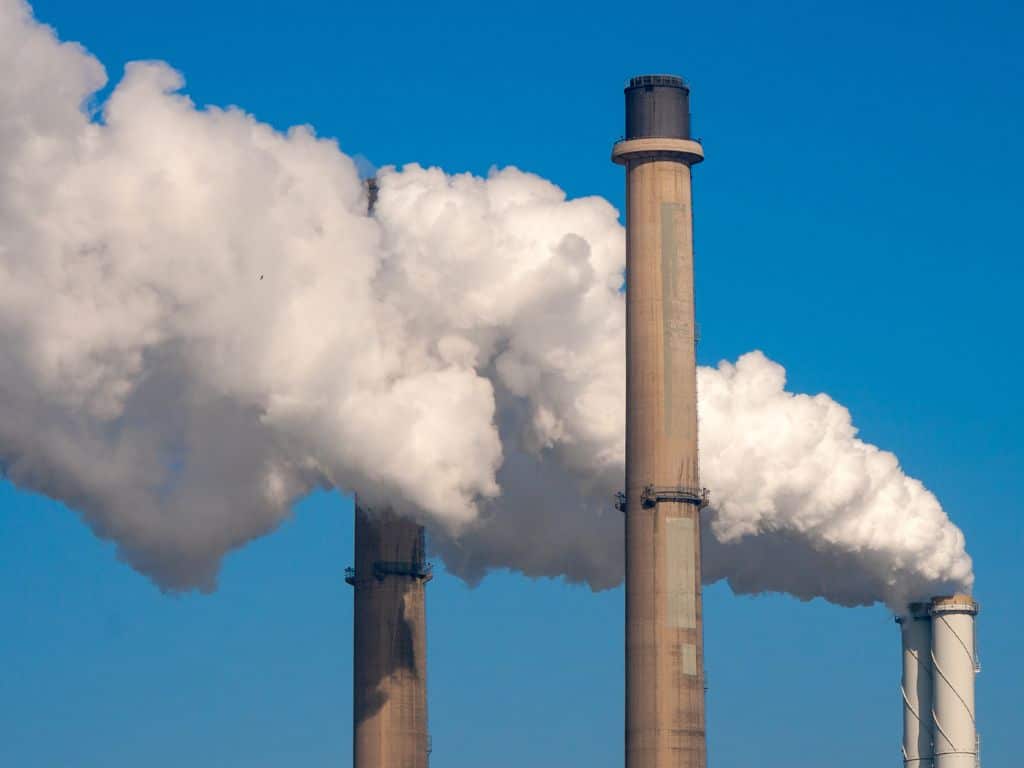In September, one of the biggest low-cost carriers in Europe announced that it would stop offsetting carbon emissions from its aircrafts. While you probably hear a lot about commitments made by governments and corporations to reduce greenhouse gas emissions to “net-zero” in an effort to halt climate change, many businesses assert that doing things the conventional way is not economically viable; this is where the idea of carbon offsets comes into play.
—
What Are Carbon Offsets?
In a nutshell, offsetting carbon emissions means supporting projects that reduce or store emissions. In theory, that means any carbon dioxide emissions from businesses, governments, or people could be balanced out through investments in alternative methods that remove the same quantity of greenhouse gas from the atmosphere that was generated in the first place.
Many accredited carbon offsetting programmes include:
- Preventing deforestation
- Reforestation, such as the planting of new trees
- Improving and maintaining forestry management
- Invest in renewable energy sources, such as solar and wind energy
- Methane or landfill gas capture

Volunteer environmentalists in Indonesia celebrate International Mangrove Day every July 26 by planting mangroves in areas impacted by tsunamis. Photo by: Basri Marzuki/NurPhoto via Getty Images
Cement producers, home heating suppliers, corporate giants like Google and Amazon, as well as the ride-hailing company Lyft all claim to be decreasing their carbon footprint through carbon offsets. When a business purchases offsets, it contributes to the funding of initiatives elsewhere that reduce greenhouse gas emissions, such as the planting of trees in Indonesia or the placement of massive machines inside California dairy farms that absorb methane produced by farting and burping cows and convert it into a fuel that can be used.
You might also like: 3 Ways to Effectively Reduce Methane Emissions From Cows
When properly implemented, carbon offsets offer several advantages, as the businesses involved work together with local communities to improve the environment by cleaning up rivers, planting trees, reducing reliance on oil, and funding clean energy. With many carbon offset programs available, you can even designate the one you want to support financially.

Trees near Mount Rainier National Park in the state of Washington allow for the sale of ‘carbon credits’ that companies can use to offset their emissions. Photo by: Ted S. Warren/Associated Press
At the same time, however, the purchase of offsets has the potential to serve as a marketing strategy that ends up covering up businesses’ climate-harming behaviours. As long as they reach their offset goals, businesses that buy carbon offsets are not necessarily compelled to change anything else about how they conduct their business.
Offsets allow businesses to establish their green credentials while giving consumers the appearance that their purchase has no adverse environmental effects. If they are not additional and long-term, these carbon offset schemes could be categorised as greenwashing, which has varying degrees ranging from zero, to moderate, to severe.
The Problems With Offsetting Carbon Emissions
In 2021, only one billion tonnes of CO2 worth of carbon offset credits have been advertised for sale by green projects on the market, in contrast to the 35 billion tonnes of CO2 emitted worldwide. In other words, offsetting carbon emissions lessens the gravity of the issue, but it is still very far from providing a solution to the fundamental problem of lowering overall CO2 emissions to halt global warming. Cutting them at the source is a much more efficient approach to do it.

Companies are scrambling to buy carbon offset credits based on forest conservation projects, but the accounting is often riddled with flaws.
Another common strategy of carbon offset initiatives is planting trees. Yet, this is hardly a long-term strategy for reducing emissions. We would need to plant and care for a tremendous quantity of trees for decades in order to even partially balance out global CO2 emission levels, not to mention that deforestation is still taking place at tremendous rates around the world.
The quantity of carbon that an offset programme pledges to capture may take a newly planted tree up to 20 years to absorb. Additionally, there is always a chance that newly planted trees will be destroyed by droughts, wildfires, disease outbreaks, and deforestation. The tremendous amount of time, money, and resources that we need to invest into maintaining newly planted trees thus arguably outweighs the benefits of carbon sequestration through tree planting.

Offsetting means preventing or removing equivalent emissions from your flight, but there is no agreement on how to calculate that.
Furthermore, a significant portion of the issue stems from the absence of a recognised international standard for carbon offsets. Instead, a variety of techniques are employed by private vendors such as Gold Standard, Verra, and the American Carbon Registry to count, certify, and broker offsets. In a study published in April 2022, the authors examined 100 offsets that had received certification from the Gold Standard and other organisations. They discovered that 90% of them did not offset as much as they initially claimed, were not permanent, had negative side effects on the local communities or ecosystems, or some combination of the above.
How To Avoid Greenwashing When Choosing Carbon Offset Programmes To Invest In?
Voluntary carbon market (VCM) offsets are widely available and frequently uncontrolled. More often than not, companies promote certain initiatives to gain public’s support and attention rather than for environmental reasons.
Businesses who are accused of “greenwashing” either invest in unverified credits, do not emphasise internal emissions reductions, or double-count carbon credits. Occasionally, even all of the above. These actions trick consumers into believing they are reducing their emissions when they are actually not.
A carbon offset programme should meet the following criteria:
- A well-defined process that establishes which projects are acceptable and how emission reductions will be measured.
- Independent third-party verification of the protocol.
- Registration of offsets in an offset register, which tracks each credit with a distinct serial number to ensure it is only used once.
- Transparency in project execution and reporting.
The best chance of lowering carbon emissions and thus minimising climate change is to provide carbon offsets programs that are additional, permanent, fulfil certified project standards, and are completed to the end of their lifespan. Because some programmes are more effective than others, companies must evaluate the pros and cons of different programmes and select the ones that can benefit the environment the most.
If you want to get into the game of reducing carbon emissions, carbon offsets are a good place to start. However, in order to be successful in the long run, we must not rely only on them. The best strategy to reduce our carbon footprint and offer the greatest environmental benefits is still to reduce emissions at the source and then offset the remaining amounts.
If you liked this article, you might also enjoy: Is Carbon Offset a Form of Greenwashing?


















